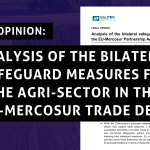The Paris Agreement requires the EU to speed up the ongoing transition away from polluting fossil fuels and towards 100% renewables. The goals of the Agreement to achieve a carbon free economy fast enough to limit temperature rise to 1.5 degree C mean vast new opportunities for jobs and competitiveness, but also some challenges in terms of ensuring the sustainability of the energy systems.
By Jean-François Faucconier, Renewables Policy Coordinator
The public consultation on the future of the EU bioenergy policy for after 2020, ending today, gives an excellent opportunity to shed light on how to make sure the transition to 100% renewables happens with due respect for biodiversity and human rights.
Bioenergy can play an important role in mitigating climate change by way of providing an alternative to fossil fuels. However, at the same time, increasing its use can in some cases be problematic. Effective carbon emissions reductions are not ensured per se and bioenergy can cause a number of undesirable environmental and social impacts, such as biodiversity loss, and land use and human rights conflicts, both in and outside of Europe. Put simply, burning whole trees for bionergy, for instance, is not green, unless harvesting is for nature conservation purposes. Moreover, the rapidly increasing demand for biomass for energy production adds to the demand for land and forests, which are already exploited by other sectors such as food, materials and fibre.
Bioenergy currently is the main source of renewable energy in Europe. At the moment, there is a problem with both the quantity (over-reliance on bio-energy) and the quality (not the right types of bio-energy are being promoted). Member States plan to keep using bioenergy to meet over half of their 2020 renewable energy targets. By then, 15% of bioenergy is expected to be consumed in the electricity sector and 65% in the heating sector. Three quarters of this bioenergy already comes from forestry.
We therefore need a robust, coherent and binding EU level policy – including comprehensive binding sustainability criteria – for all forms of bioenergy (biofuels, solid and gaseous bioenergy), which will give clear direction for public incentives.
This being said, it is a no-brainer that the EU should first always apply the ‘efficiency first’ principle and look into the reduction of energy demand when planning the transition towards a 100% renewable-based energy system. Only then will bioenergy play its due role in Europe’s transition to a sustainable energy system based on renewable energy and energy efficiency. Sustainable bioenergy may be the only way to decarbonise certain industrial processes or forms of transport. But the levels available to us are limited, highlighting that the future role of bioenergy, although an important one, may be a rather small one.
You can find CAN Europe’s submission to the public consultation on Bioenergy here.



